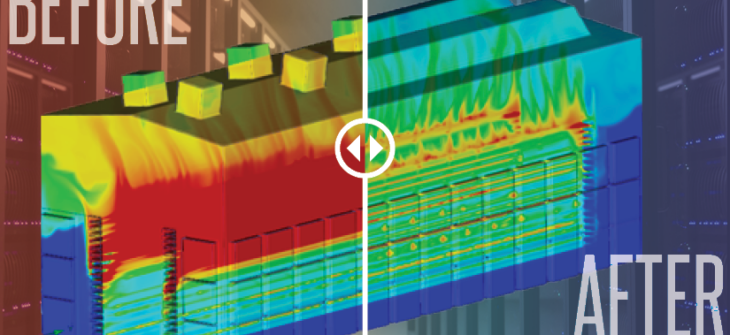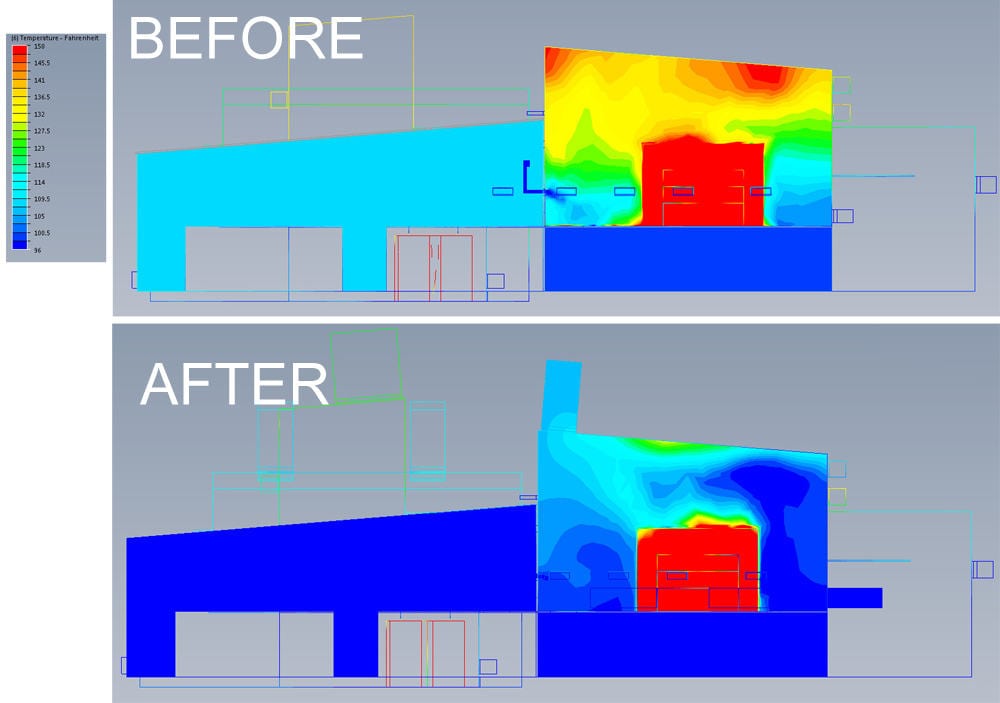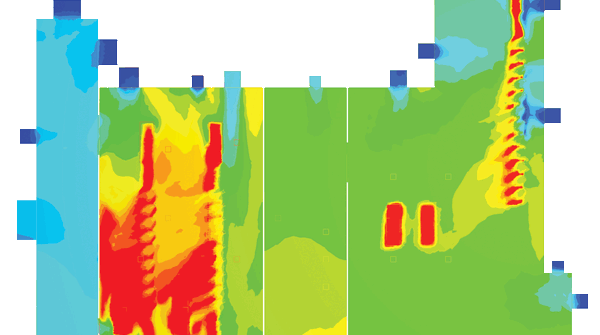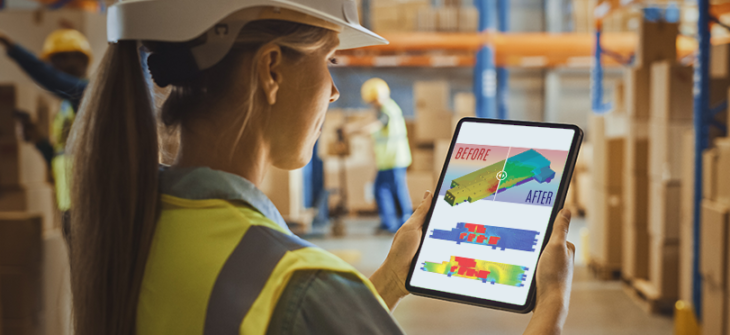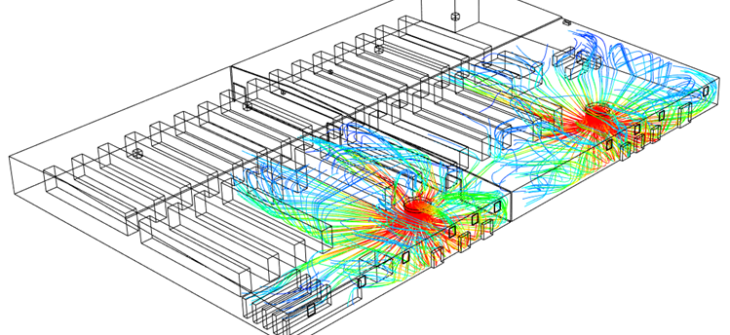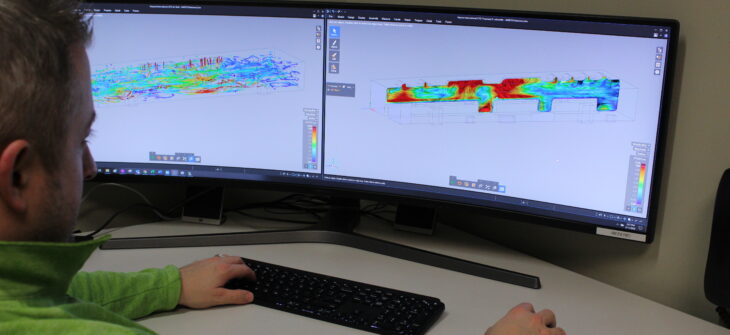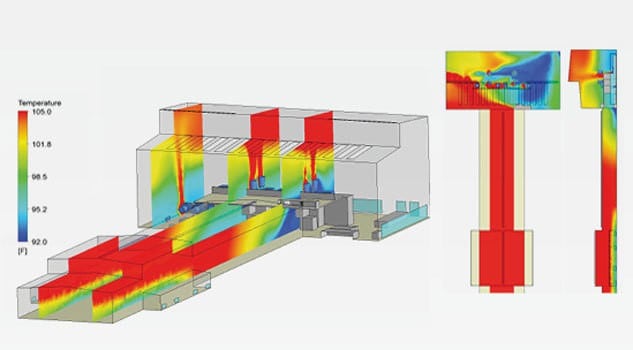CFD Modeling
Increased data centers are being built across the United States every day. These facilities are often bigger and include more units. With those expanded facilities, greater cooling is required. That’s where Moffitt comes in. Our experience in data center ventilation design has helped various facilities keep their buildings cool without exorbitant air conditioning costs. While
Moffitt Corporation has been designing industrial ventilation systems with a paper & pencil for over 50 years. Of course, the technology has changed significantly in the last five decades. Now, in addition to paper & pencil, we use sophisticated CFD modeling to design the most effective and efficient ventilation systems. Advanced CFD Modeling for High
Computational Fluid Dynamics or CFD Analysis for Buildings will let you see your facility in a whole new way. You’ll see where the warm air gathers and where it most effectively exhausts. Eliminate the guesswork of putting exhaust fans where you think the warm air goes, with CFD analysis. Computerized thermal imaging uses 3D models
You can save money with CFD modeling. CFD modeling and analysis puts an end to replacing fans because “that’s what we’ve always done”. It means you no longer need to spend money and cross your fingers that your plant will be cooler. So no more taking the word of a guy you’ll never hear from
A picture is worth a thousand calculations. That is why Computational Fluid Dynamics (or CFD) modeling is so useful for ventilation. This tool creates vivid images that can show a new ventilation system in motion. A step beyond a static photo, they show how air actually moves in your facility. These models illustrate temperature changes,
Spec sheets, drawings, and equations are important when choosing a ventilation system. However, none of those illustrate the power of a ventilation system like a CFD model. Seeing how the air will move through a new building in vivid, living color makes the ventilation decision process easier.
At Moffitt, we use industrial CFD modeling help our customers see how a new ventilation system will impact their building. Having a vivid, 3D model helps the customer better visualize what we’re proposing with a new system. Furthermore, by accounting for each door, window, vent, and fan, we can create more accurate ventilation designs. CFD

